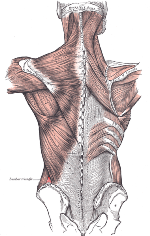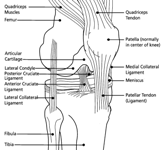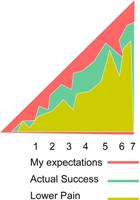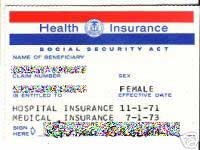So you injure your back and go to the doctor for help. You are examined and then some X-rays and maybe an MRI. The doctor then comes back with some type of term, called a diagnosis you might have heard before but don’t know what it specifically means, or some other Latin gobbledygook that you have NO idea about. So in this Blog, I will attempt to explain all of the in’s and out’s of “back injury terminology”. Click here to reference another blog about the Anatomy of the Spine.
Southwest Orthopaedic Physical Therapy Information Headquarters
Here is a series of blogs written by SWOPT employees, Kristen, Roby and Tami. They are part of our front office staff and have put together these blogs to give an insight to what it is like to set up an appointment at SWOPT. We hope you enjoy. Leave any questions as comments and someone at SWOPT will respond.
Topics: physical therapy, health insurance
Tennis elbow can quickly bring your tennis game to a halt. While this injury is commonly found in tennis players, it can also be found in chefs, construction workers, and painters. The reason behind this is because the wrist is constantly shifting from a flexed forward position to an extended back position. The muscles in the forearm that work the wrist also connect into the outside of the elbow. When constantly being stretched and contracted the tendons in the elbow begin to wear and tear. This causes inflammation in the elbow joint and thus creates pain when the elbow fully extends.
Topics: health, fitness, physical therapy, injuries
Our spine’s primary job is to act as the “tree trunk” of the body. The spine is made up of 24 bony blocks called vertebrae, stacked one on top of the other. In between each two vertebra is a disc, made out of cartilage rings. The disc acts like a rubber band to absorb shock between vertebrae, and to allow movement in every direction without damaging the bony vertebrae.
Topics: health, physical therapy
BYOM:Bring Your Own Magazine- Waiting Room Etiquette
"Isn't it great when you arrive for your doctor's appointment and the latest issue of your favorite magazine is in the lobby? I personally love it; I usually skip all the juicy gossip and head straight for my horoscope. I like to know what I'm in for because who knows, I might hit the lottery and end up on a cruise by Friday. As I'm reading I find out that my week is going to be great! I decide to go back to the cover and read what else my favorite magazine has to say about the latest celebrity news. As I read the breaking news, Jennifer Anniston and Brad Pitt are ending their relationship. I become curious because last time I heard Brad and Angelina just adopted another child. I glance at the date only to find out that this magazine is really old. I'm sad now because my horoscope is not what I read it was going to be. Now there is no cruise for me and the twenty other people I was going to take with me. Glad I didn't send out a mass text message to my family and friends to quit their jobs and pack their bags."-Tami, SWOPT employee
Topics: physical therapy
This is the first in a series on Understanding Pain. Please note SWOPT prides itself in our abilities to explain pain to facilitate your rehab process.
Topics: health, physical therapy
Currently 96% of professional physical therapy programs around the country are graduating students at the DPT level (Doctorate of Physical Therapy). By the year 2015 all graduates must have a DPT.
Topics: physical therapy
The definition of Anterior Knee Pain(ANP) is as follows: A syndrome that causes pain to be felt on the front(or anterior) of the knee on, under or around the kneecap.The pain is usually mechanical, increased by activity and decreased by rest. Sensations and symptoms vary and there is more than one tissue that can be the cause of the pain. ANP is very common in adolescents and usually begins at the beginning of a growth spurt. It can be caused by the growth spurt alone or it can be triggered by the combination of growth and sports. ANP may continue throughout the teen years and sometimes into early college.It may be chronic and it also disappears on it's own at times. Different types of injury can cause ANP such as a direct blow to the kneecap, or after a ligament injury to the knee(indirect cause).
Topics: health, physical therapy, injuries
"GREAT EXPECTATIONS" Bilateral knee surgery – 6+ months post surgery
Topics: physical therapy, surgery, patient story
3 Things to Know about Medicare and Physical Therapy
Medicare is an insurance company that people get through the social security administration. Medicare has been a system that has been providing valuable health benefits at a low cost. This makes it easier for many people to receive health benefits especially as they retire and no longer are covered under their employers insurance. Medicare can be a confusing system to navigate and the rules and regulations may seem endless. Physical therapy is a specialty service and this makes the rules and regulations even more challenging to navigate. To make it easier to understand, here are a few important things to know about the rules that are placed with physical therapy.
Topics: physical therapy, health insurance













